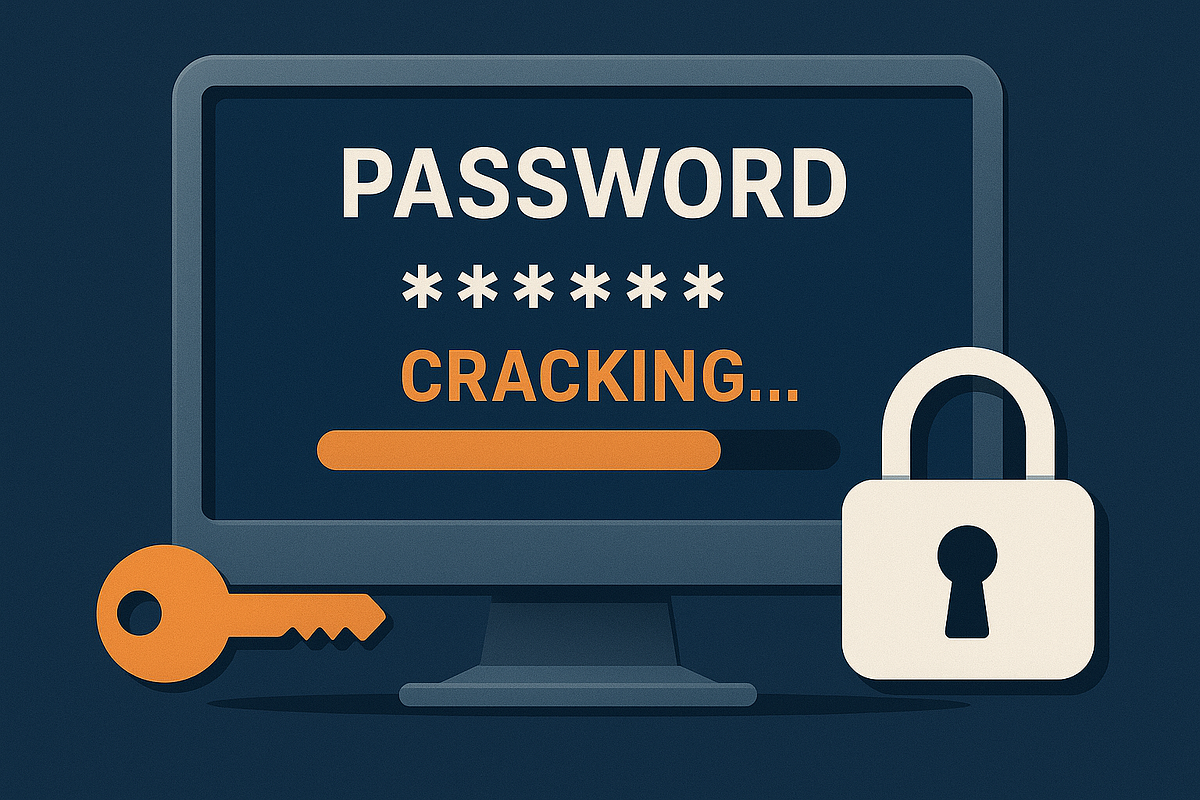In digital forensic investigations, accessing password-protected data can be the key to uncovering hidden evidence. Passwords safeguard personal, corporate, and criminal data alike — from encrypted drives to social media accounts. However, when investigators encounter encrypted systems or password-protected files during lawful examinations, password recovery and cracking techniques become essential tools. These methods, when used ethically and legally, allow forensic experts to retrieve vital information while preserving evidence integrity.
Introduction
In the world of cybercrime and digital investigations, passwords act as both a shield and a challenge. They protect user data, but they can also obstruct access to crucial evidence in legal cases. Forensic experts, therefore, use scientifically validated methods and tools to recover or crack passwords — always under appropriate legal authorisation.
The objective isn’t to invade privacy, but to lawfully access evidence that may prove or disprove allegations of fraud, data theft, hacking, harassment, or any other cyber-related offence.
Legal and Ethical Framework
Before initiating any password recovery or cracking process, investigators must ensure complete compliance with all applicable laws and regulations. Unauthorised password cracking can be a criminal act itself. Hence, digital forensic examiners only perform such tasks under:
-
A valid court order or search warrant
-
Written consent from the data owner or authorised representative
-
Lawful authority under a government or law enforcement request
Forensic professionals also adhere to strict ethical standards, ensuring that only relevant data is accessed, no personal information is viewed unnecessarily, and every action is properly documented for transparency and admissibility in court.
Types of Password-Protected Evidence
Password-protected data can appear in numerous digital forms. Common examples include:
-
Computer logins: Windows, macOS, or Linux accounts
-
Mobile devices: Android and iOS PINs, patterns, or passwords
-
Disk encryption systems: BitLocker, FileVault, VeraCrypt, or LUKS
-
Application-level security: Email clients, databases, and password-protected documents (Word, Excel, PDF)
-
Cloud storage and social media accounts: Protected by multi-factor authentication (MFA) and strong passwords
-
Network devices and IoT systems: Routers, cameras, or DVR systems
Each type of protection requires a different recovery strategy, specialised tools, and careful evidence handling.
Non-Destructive Password Recovery Methods
In forensic investigations, non-destructive recovery is always preferred before resorting to brute-force techniques. These methods focus on retrieving passwords or keys without altering or damaging the original evidence.
-
Password Recovery Tools: Many forensic suites (like Elcomsoft or Passware) can extract saved or cached passwords from browsers, memory, or system registries.
-
Memory (RAM) Analysis: Using tools like Volatility or Magnet Axiom, investigators can extract encryption keys or plaintext passwords from volatile memory dumps.
-
System Artefacts: Windows SAM files, macOS keychains, and Linux shadow files often contain hashed passwords that can be analyzed separately.
-
Password Reset or Bypass (Legally Authorised): In some cases, resetting credentials with consent or legal approval can provide lawful access.
-
Recovery via Service Providers: Cooperation with service providers (email or cloud companies) under lawful orders can retrieve passwords or temporary access tokens.
These methods emphasise data integrity and forensic soundness, ensuring that evidence remains untampered and verifiable.
Password Cracking Techniques
When recovery through legitimate means fails, investigators use password cracking techniques — computational methods to uncover passwords from hashes or encrypted data. Major approaches include:
a. Dictionary Attack
This technique tests common or previously used passwords from a predefined list. It’s effective against weak or predictable passwords.
b. Brute Force Attack
Every possible combination of characters is tried until the correct password is found. While guaranteed, it’s time-consuming and often impractical for long or complex passwords.
c. Hybrid Attack
Combines dictionary and brute-force approaches — testing dictionary words with variations (like replacing ‘a’ with ‘@’, or adding numbers).
d. Mask Attack
Used when partial information is known (e.g., password length or pattern). It reduces the total number of possibilities.
e. Rainbow Table Attack
Uses precomputed hash tables to speed up password recovery. However, salted hashing methods limit their effectiveness.
f. GPU-Accelerated Cracking
Tools like Hashcat use the power of graphics processing units to test millions of passwords per second, significantly reducing time.
Cracking is always performed on forensic images, never on live evidence, ensuring the original data remains untouched.
Popular Tools Used in Password Recovery and Cracking
Some of the widely accepted and court-approved tools include:
-
Hashcat – Fast GPU-based password cracking tool
-
John the Ripper – Open-source password hash recovery tool
-
Elcomsoft Forensic Toolkit – Recovers passwords from devices, files, and cloud services
-
Passware Kit Forensic – Supports hundreds of file types for password recovery
-
Volatility Framework – Extracts keys and passwords from memory dumps
These tools are validated and accepted in digital forensics labs worldwide, including law enforcement agencies and cybersecurity organizations.
Documentation and Evidence Integrity
Every password recovery or cracking attempt must be meticulously documented to maintain credibility and admissibility in court. The following steps are crucial:
-
Perform all operations on forensic copies of data
-
Maintain chain of custody records for every step
-
Record software versions, hash values, and configurations used
-
Preserve cracking logs, recovered passwords, and time-stamped results
-
Ensure peer review and validation of findings
Proper documentation guarantees transparency and demonstrates that the forensic process adhered to scientific and legal standards.
Challenges and Limitations
Despite technological advances, password recovery is not always successful. Investigators face challenges such as:
-
Strong encryption algorithms that make brute-force cracking impractical
-
Long or random passphrases that exponentially increase complexity
-
Use of multi-factor authentication (MFA), which requires physical or biometric tokens
-
Legal restrictions prevent certain invasive techniques
-
Resource constraints, as cracking can demand high-end hardware and time
Forensic teams must balance technical feasibility with ethical and legal limitations.
Best Practices in Password Recovery
-
Always obtain legal authorisation before any cracking or recovery attempt.
-
Start with non-destructive recovery methods first.
-
Work on cloned forensic images, never original media.
-
Document every action for chain of custody verification.
-
Use validated forensic tools recognised by the community.
-
Report findings clearly and objectively in the final forensic report.
Adhering to these practices ensures that recovered data remains admissible and defensible during legal proceedings.
Conclusion
Password recovery and cracking play a vital role in modern digital forensic investigations. From unlocking encrypted drives to retrieving deleted communications, these methods help uncover crucial digital evidence — provided they are performed legally, ethically, and scientifically.
Forensic experts must remain updated with the latest tools, hashing algorithms, and password protection techniques to ensure effective investigations while respecting individual privacy and due process. Ultimately, the goal is not just to access data, but to uncover the truth responsibly and lawfully.





Post comments (0)